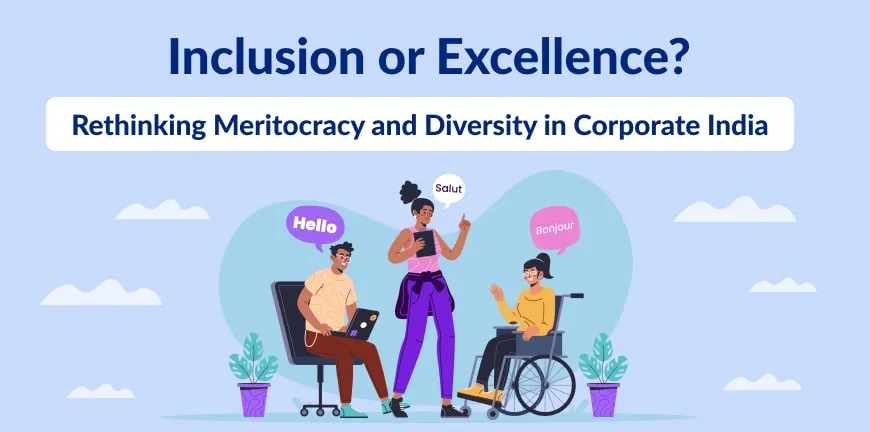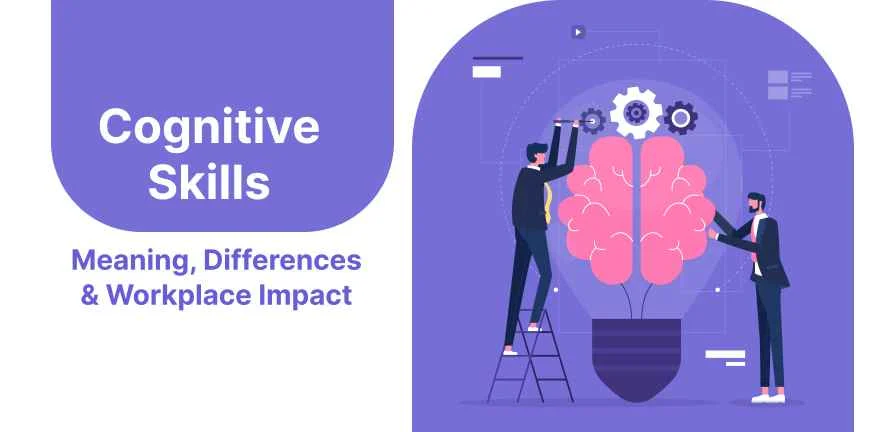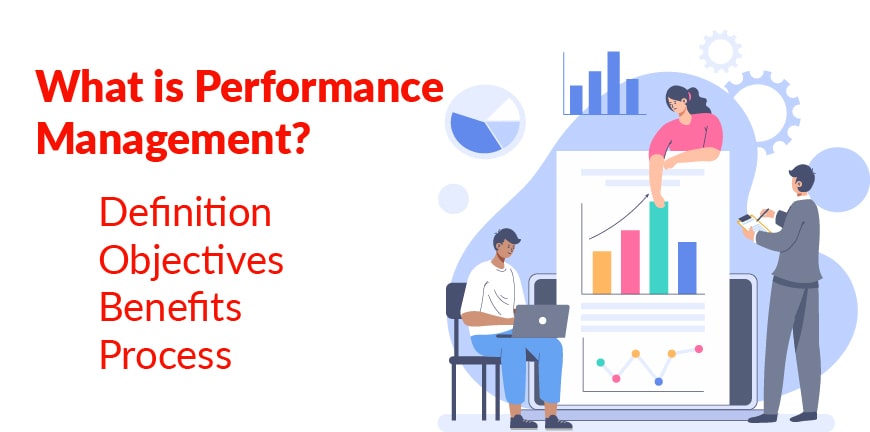
Why Is There a Labor Shortage in Japan?
08/05/2025
What Is the Meaning of Employee Poaching & Its Importance?
12/05/2025“We all should know that diversity makes for a rich tapestry, and we must understand that all the threads of the tapestry are equal in value no matter what their colour,” said Maya Angelou.
As the world takes strides toward a more progressive and inclusive future, India, too, is discovering its tone, striving to bolster its rich diversity with a bold vision of equality and empowerment. As India marches toward its $5 trillion economy goal by 2025, the imperative for diversity, equity, and inclusion (DEI) is reshaping how organizations define and achieve excellence.
In the ever-evolving corporate India landscape, diversity and inclusion are not catchlines any more they are business strategies. But as boardrooms reverberate with demands for greater representation, an old debate recurs. Does an effort to build diverse workforce lead to compromising on merit?
Can organizations strike a balance between inclusion and excellence, or they will be in a dilemma and end up choosing one over the other? It is time to burst the mythical bubble and reimagine what meritocracy really means in the Indian corporate playbook.
Illusion of Pure Meritocracy
Meritocracy is the belief that individuals forge ahead with, based on their talent, effort, and achievements. It is a fair and equitable system in theory, and rests on the premise that social and economic accolades like educational opportunities, career advancements, and financial success can be earned through merit rather than inherited privilege, social class, or personal connections.
In a true meritocratic society, individuals are evaluated on criteria like intellectual ability, work ethic, creativity, and performance. Institutions like schools, workplaces, and governments are designed to identify and reward these qualities enabling the most capable individuals to qualify to positions of influence and responsibility.
The system is zealous about maximizing human potential and societal efficiency by designating the most critical roles to the people who are best suited for them. In practice, however, the scenario is different.
In India, the historical and socio-economic landscape entailing caste, gender, region, and educational background are still hindering the access to equal opportunities. The legally abolished caste system continues to play a powerful role in influencing access to opportunities. Women and girls continue to face structural and cultural challenges that obstruct their ability to compete on equal terms.
India’s vast geography leads to uneven development, resulting in stark differences in opportunities based on location. The foundation of a meritocratic society is education, but India’s educational system is hierarchical.
When organizations claim to be “merit-based,” they frequently judge merit through narrow and culturally biased lenses including high class educational credentials, polished English, urban social capital, and professional networks.
These factors often undermine and overlook equally capable individuals from underrepresented sections who does not have similar privileges but bring to the table best in class skills and perspectives.
- 20% of companies offer diversity scholarships.
- Over the past 5 years, women in leadership roles have increased by 20%.
- Companies target a 40% women workforce by 2025.
Diversity as a Strategic Imperative
Diversity is far from a moral obligation today it is a strategic and economic requirement. Global research has demonstrated that diverse teams consistently outperform their homogeneous counterparts in areas of innovation, decision-making, and profitability.
A Varied perspective, structured by distinct cultural backgrounds, experiences, and identities, drives teams like these to challenge assumptions, explore creative solutions, and anticipate the needs of a broad customer base effectively.
The reality in the Indian context is even more distinct. India is a nation with diversity in language, religion, caste, gender, socio economic background, and more. Businesses operating in a richly varied society, comprising of a workforce that is profoundly diverse is not just advantageous but vital.
A diverse workforce is more likely to comprehend the nuances, challenges, and behaviours of an array of customer segments, allowing organizations to create products and services that are more inclusive and effective. Despite the advantages many corporate leaders have inhibitions in fully embracing diversity.
They fear that by prioritizing diversity they might compromise performance or dilute excellence. There is an increasing perception that in trying to be inclusive, organizations might have to set the bar low, a concept rooted in narrow and backward understandings of merit.
This philosophy along with undermining the potential of underrepresented groups also fails to accept that excellence can take many forms. Inclusion does not mean lowering standards. Instead, it means expanding our definitions of merit to identify a wider range of talents and competencies.
Reimagining What We Value
Indian corporations need to move beyond their limited checklists of elite affiliations to blend inclusion with excellence. It is time for them to identify and redefine the idea of merit recognizing the entire gamut of human potential.
True merit often resides in the qualities that are overlooked including resilience, cultural fluency, problem-solving abilities, and potential to resolve differences.
Organizations must work towards reimagining and reevaluating how they recruit to embrace and unlock true potential. To get into the fold companies and their management will have to let go of blind hiring practices that focus on stereotypes not skills.
Firms must reorganize and assemble interview panels that reflect India’s diversity. They must craft mentorship programs to boost individuals who have been historically neglected and remove from the leadership pipeline. It should be a journey of continuous bias training and not a one-time scenario.
It is about identifying talent in its most wholesome and dynamic form driving to design a truly inclusive meritocracy reflecting the richness of India.
- Gaps in Representation
- Women hold only 1.8% of board seats in Fortune 500 Indian companies.
- Women MDs/CEOs in India’s Fortune 1000 companies stand at a mere 3.2.
Leadership and Accountability
It is the duty and prerogative of a leader to lead the transition toward inclusive excellence. The commitment of the leaders and individuals holding top positions to DEI (Diversity, Equity, and Inclusion) must be distinguishable and measurable.
The process involves setting diversity goals, reporting progress transparently and holding leaders accountable for inclusive practices. Corporate boards and executive teams should send a message clearly and their work culture cultivated across the organisation should reflect the diversity they seek.
Employees feel confident when they see role models in positions of power advocating diversity as it indicates inclusion and excellence complement each other.
Building Allies Navigating Change
A change will always come with hurdles especially when it challenges long-standing power dynamics and there will be resistance. Inclusion efforts may often be perceived as a threat to individuals who benefit from the existing structures.
This mindset can be detrimental to progress if not addressed timely with intention and strategically. Inclusion must be redesigned and presented as a collective investment that will benefit an organization’s long-term success.
A process of engagement must be facilitated through open dialogue, transparent data, and a shared sense of purpose. Shifting of mindsets will happen with communication and conversations embedded in empathy, evidence, and mutual respect.
The highlight should be how diverse teams can foster innovation, resilience, and stronger business outcomes. Inclusion presented as a strategy for collective growth not competition makes it easier to cultivate a sense of shared responsibility.
This is when allies enhance the process as partners and establishes that inclusion is not just an issue about the underrepresented but is a fundamental leadership value that belongs to everyone.
Inclusive Excellence At its Core
Inclusion and Excellence can be achieved successfully, and true meritocracy can flourish in an environment everyone is given a fair chance to succeed. This can happen when the barriers to inclusion are knocked down.
Refurbishing excellence must be a strategy for corporate India to be worked upon through the lens of equity, broadening the idea of merit and building organizations with diversity not being just a mere checkbox, but the foundation of innovation and progress.
Embracing inclusive excellence by Indian corporations can open a plethora of opportunities where they can tap into the full power of India’s massive, diverse talent pool. In the world of complex developments and rapid economic evolvement, it is not a moral imperative but a strategic advantage.
Contact Us For Business Enquiry

Rajkumar Shanmugam
Rajkumar Shanmugam is the Head of HR at ALP Consulting, bringing over 19 years of comprehensive HR leadership experience across India and international markets. His expertise spans talent acquisition, employee relations, performance management, compliance, and HR transformation. Rajkumar has a proven track record of driving people-centric initiatives, enhancing workplace culture, and aligning HR strategy with business goals. With extensive experience in US staffing operations and global mobility, he continues to lead organizational excellence through innovation and employee engagement.




